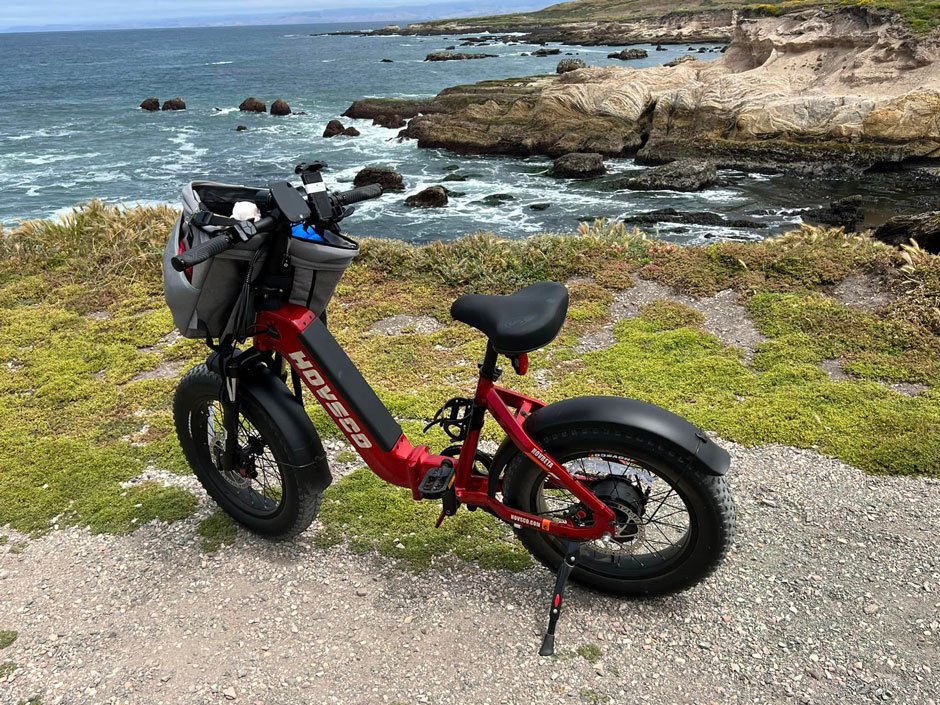When particular technologies come to mind, we consider how they have altered the world and how we live. Consider the car, the computer, and the smartphone as examples.
Another technology, meanwhile, is silently growing and disseminating all around us without garnering nearly as much attention. The electric bicycle has the power to alter the course of history.
There are 200 million e-bikes in Asia, the region with the biggest e-bike market.
They possess more than a quarter of all bicycles in the nation.
The figures are now lower in the United States. But as more individuals become aware of them, adoption rates are increasing.
In 20 years, when we reflect on our quest for a personal mobility solution, we won’t be able to recall a period before e-bikes, just as it has been more challenging to remember a time before smartphones.
The Background
Over a century has passed since the invention of electric automobiles. They are many decades older than gasoline-powered ones. If someone had to wager on the potential of cars in 1900, they probably would have done so on electricity. Even though the first bicycle-like inventions were patented in the 1890s, the current electric bike is just a few decades old. E-bikes of the early modern period had the same problem as their antique counterparts: both employed costly, heavy, and short-lived batteries, which made them heavy, unreliable, and unworkable. Things are now beginning to change due to the most recent technological revolution. Since the popularity of computers, mobile phones, and other electronic devices has multiplied, lithium-ion batteries have become more readily available and less expensive. Batteries that formerly weighed 20 lbs and had a range of only a few miles now weigh less than 10 lbs and have a range of more than 60 miles. Today’s majority of electric bicycles utilize these batteries.
E-bikes are taking off and entering the mainstream after a century of mostly existing avant-garde concepts. E-bikes are developing into a dependable mode of transportation and leisure for the general public thanks to evolving technology. People started questioning what made an electric bike different from a traditional one.

Why did anyone decide to purchase an electric bike?
When people hear about electric bikes, they often ask themselves why someone would purchase one instead of a traditional motorcycle. Their reservations center on:
- What makes the two different from one another?
- What benefits may electric bikes offer?
- Doesn’t riding a motorcycle serve the purpose of exercise?
- Why do they cost so much more than standard bikes?
We often respond to consumers’ inquiries about these legitimate and compelling issues because of their uncertainty. There are some leading e-bikes online stores like Smartwheel , from where you can buy new and used E-scooters, E-unicycles, and E-bikes of popular brands. People have yet to get used to it since it’s a new mode of transportation.
Not to worry. After this article, you’ll learn the difference between electric and traditional bikes. The suitability of an electric bike for you will also be apparent.
What technological distinctions exist between a conventional bike and an electric bike?
We’ve compared electric bikes to conventional bikes to make it easier for you to choose the sort of bike that’s best for you. You can then observe where and why they diverge and which elements they share. Appearance and mechanics
At first appearance, electric bikes resemble ordinary bikes quite a bit. The most pervasive misconception about e-bikes is that they are similar to scooters when they are simply bicycles with electric motors.
Electric bikes’ wheels, handlebars, and body geometry are identical to mechanical bikes. The brakes and pedals, as well as all other mechanical components, function in the same manner.
The electrical driving system is the only distinction. A controller or display screen, an electric motor, and a battery are present. The motor, which the battery runs to move the bike ahead, is assisted by pedaling. See our article on e-bikes for additional details on their electric technology. Servicing and repairing
Most of an e-bike’s parts are identical to a standard bike. An e-bike requires the same maintenance as a traditional bike. This covers upkeep, repairs, and service. If something goes wrong with the wheels or brakes, you may take an electric bike to the same repair shop as a traditional bike. These fixes need to cost the same as well.
This only alters when anything goes wrong with the electric parts, and an expert must be sought. The electrical system, however, has relatively few flaws and is protected by a guarantee. Riding skills
This is the critical inquiry for the majority of folks! How do e-bikes feel to ride? What distinguishes it from a typical bike? Riding an e-bike is quite similar to riding any other kind of bike.
The electric motor starts working as soon as you climb on and begin pedaling. Typically, the change is so seamless that you won’t notice it. The only difference between riding an electric bike and a traditional cycle is that the electric motorcycle feels more comfortable. While riding, you will be softly peddling. It becomes easier to get moving from a standing posture. You can easily glide up hills without becoming out of breath and easily handle headwinds. The motor’s pedal assistance may also be altered, which alters how the e-bike feels to ride. Your legs perform the majority of the effort since you lower the power. When the power is at its highest, you may effectively cycle with your legs, mimicking the pedaling movements yet moving swiftly and smoothly. Speed
Does this imply that e-bikes are quicker than standard bikes in light of all the electrical assistance? Depending on how quickly you typically bike.
The e-bike motor will allow you to go up to 25 km/h (15.5 mph) by EU laws. Over this speed, the engine will stop, forcing you to pedal on your own.
The electric motor will only assist you if you wish to go slowly. One of the numerous explanations for why riding an electric bike is not “cheating” is that they do not provide help during a race.
E-bikes, on the other hand, could speed up your ride if you aren’t competing. This is because they make pedaling seem effortless, which keeps you from being fatigued as quickly. Additionally, they cut the time you spend driving by making it simpler to maintain a consistent pace and pick up speed after stopping. On the other hand, E-bikes are made for comfortable riding rather than for setting speed records.
Laws and Regulations
People are also worried about the laws and regulations that apply to e-bikes. Unlike regular bikes, electric bikes are regarded as motorized transportation. As a result, they are constrained by several government laws that deal with their strength and speed. But as a rider, you won’t be subject to their rules. The sole prerequisite for riding an electric bike is having reached the age of 14 or older. Electric bikes also adhere to the same regulations as standard bicycles. They do not need to be insured or registered, and riding one requires no license.
E-bikes may be used on any bicycle-friendly surface, including cycle routes.
Which one suits me best?
An electric bike can be a good idea if you want to use your bike for commuting or long-distance trips. Additionally, electric bikes make riding seem more doable and less intimidating if you are less physically active than you previously were if your neighborhood is full of steep hills. E-bikes are ideal for journeys when you don’t want to exert yourself to the point of fatigue.
However, a standard bike can be all you need if you’re searching for a bike outside during the summer or if you will be riding very little. In addition, electric bikes cost more than conventional bikes.
Therefore, your tastes will determine the best bike for you. Consider testing out ordinary and electric bikes to discover which you prefer. You may test the bikes when visiting one of our E-bike centers.

